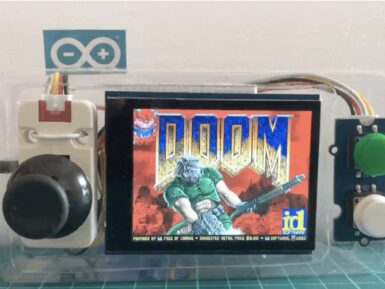
Overview
Grove-Temperature & Humidity Sensor Pro is a high accuracy temperature and humidity sensor based on the DHT22 module (also known as AM2302 or RHT03). High-cost performance and high precision make it ideal for temperature and humidity monitoring of Arduino and Raspberry Pi, you can also use it to make a thermometer and hygrometer.
The DHT22 includes a capacitive humidity sensor and a high precision temperature sensor. The range of humidity sensor is 0 to 99.9 %RH with ±2% accuracy while the temperature sensor ranges from -40 to 80℃ with ±0.5℃ accuracy. With the help of a built-in 8-bit microcontroller, the DHT22 converts the analog output of those two sensors to the digital signal, and output both temperature and humidity data via a single pin.
Compared with the DHT11, this product has higher precision and wider measurement range, but the usage and code are almost the same. Simply put, if you need higher measurement accuracy, this product will be a better choice.
Tech specs
|
Item |
Min |
Norm |
Max |
Unit |
|
VCC |
3.3 |
- |
6 |
V |
|
Measuring Current Supply |
1 |
- |
1.5 |
mA |
|
Standby Current Supply |
40 |
- |
50 |
uA |
|
Measuring range (Humidity) |
5% |
- |
99% |
RH |
|
Measuring range (Temperature) |
-40 |
- |
80 |
°C |
|
Accuracy(Humidity) |
- |
- |
±2% |
RH |
|
Accuracy (Temperature) |
- |
- |
±0.5 |
°C |
|
Resolution (Humidity) |
- |
- |
0.1% |
RH |
|
Resolution (Temperature) |
- |
- |
0.1 |
°C |
|
Repeatability(Humidity) |
- |
- |
±0.3% |
RH |
|
Repeatability (Temperature) |
- |
- |
±0.2 |
°C |
|
Long-term Stability |
- |
- |
±0.5% |
RH/year |
|
Signal Collecting Period |
- |
2 |
- |
S |
|
Respond Time 1/e(63%) |
6 |
- |
20 |
S |
Get Inspired
Print a claw on your 3D printer and use a myoelectric sensor to control it.

"But can it run Doom?" is more than just a joke in the tech world. It is also a decent litmus test for the computing power of hardware. That test isn't very relevant for modern computers, but it is still worth asking when discussing microcontrollers. Microcontrollers vary in dramatically in processing power and memory, with models to suit every application. But if you have an Arduino Nano ESP32 board, you can run Doom as Naveen Kumar has proven. The Nano ESP32 is a small IoT development board for the ESP32-S3 microcontroller, featuring Wi-Fi® and Bluetooth® connectivity. It also has a relatively high clock speed and quite a lot of memory: 240MHz and 512kB SRAM, respectively. That still isn't enough to meet the requirements of the original Doom release, which needed a lot more RAM. But Kumar demonstrates the use of an MCU-friendly port that runs well on this more limited hardware. Want to give it a try yourself? You'll need the Nano ESP32, an Adafruit 2.8" TFT LCD shield, an M5Stack joystick, a Seeed Studio Grove dual button module, a breadboard, and some jumper wires to create a simple handheld console. You'll have to compile and flash the Retro-Go firmware, which was designed specifically for running games like Doom on ESP32-based devices. You can then load the specialized WAD (Where's All the Data) files. Kumar reports an average frame rate at a 320×240 resolution, which is very playable.







